Live Resin Distillate
£100.00 – £1,600.00
Description
Live Resin Distillate
Live Resin Distillate The main difference live resin and distillates is that live resins retain most of the plant’s original cannabinoids and terpenes.
WHAT IS LIVE RESIN?

Live resin is a type of cannabis concentrate celebrated for its ability to capture the essence of the cannabis plant at its peak freshness. The key to live resin’s unique quality lies in its production method. Immediately after harvesting, the cannabis plant is flash-frozen, ensuring that the rich profile of cannabinoids and terpenes is perfectly preserved. This method gives live resin its characteristic sticky, viscous texture, making it a favourite for those who enjoy dabbing or vaporizing.
WHAT IS DISTILLATE?

On the other end of the spectrum is the distillate, a highly refined cannabis extract known for its purity and potency. The production of distillate involves a sophisticated process of distillation that separates cannabinoids from plant matter and impurities. This process yields a clear, thick liquid high in THC concentration. Distillate’s versatility makes it popular in edibles, cartridges, and concentrates.
LIVE RESIN VS. DISTILLATE

The choice between live resin and distillate often comes down to a preference for a rich cannabinoid profile or a robust terpene presence. Here’s a closer look at the key differences:
THE EXTRACTION PROCESS
- Distillate: The extraction process involves significant heat, leading to the decarboxylation of cannabinoids (like THC activation). This method focuses on isolating and activating specific cannabinoids.
- Live Resin: In contrast, live resin extraction happens at much lower temperatures. The cannabis plant is flash-frozen before extraction, which occurs under cool conditions, aiming to preserve the rich terpene profile.
TERPENE AND THC CONTENT
- Live Resin: Designed to maximize terpene levels, live resin offers a diverse and aromatic experience, closely mimicking the original cannabis plant’s flavour and aroma.
- Distillate: Characterized by extremely high THC levels and minimal terpenes, distillate concentrates on delivering potent cannabinoid effects with little to no flavour.
THE SMOKING EXPERIENCE
- Distillate: Thanks to the decarboxylation process, distillate can be consumed in various ways, including orally and sublingually, in addition to traditional smoking or vaping. Its nearly flavourless nature makes it versatile for medical marijuana patients seeking high THC without the cannabis taste.
- Live Resin: Requires heat to activate THC, making it necessary to smoke or vape for full effect. Live resin offers an authentic marijuana flavour, providing a more traditional cannabis experience.
HOW TO BUY DISTILLATE AND LIVE RESIN

CHOOSING THE RIGHT PRODUCT
The most convenient and practical option when purchasing distillate and live resin is ready-to-use products like vape cartridges and pens. Here’s a guide on how to select the best option for you:
BUYING LIVE RESIN
- Live Resin Vape Cartridge: Choosing a Live Resin Vape Cartridge is ideal for those who prefer the aromatic and flavorful experience of live resin. These cartridges are pre-filled with high-quality live resin, offering a rich terpene profile and a genuine cannabis flavour.
- Ease of Use: The advantage of vape cartridges is their ease of use. Attach them to a compatible vape pen, and you’re ready to enjoy the full-spectrum benefits of live resin.
- Why Choose Live Resin Cartridges? Opt for live resin cartridges if you’re seeking an authentic experience with the added benefit of a convenient, discreet, and portable form.
BUYING DISTILLATE
- CBD Vape Pen: For those who favour the high potency and straightforward experience of distillates, a CBD Vape Pen is the perfect choice. These disposable vape pens are filled with CBD distillate, offering a potent dose of CBD with minimal flavour.
- Convenience and Discretion: Disposable vape pens are incredibly user-friendly, requiring no additional setup or maintenance. They are also discreet and portable, making them ideal for on-the-go use.
- Why Choose CBD Vape Pens?: Choose a CBD vape pen if you’re looking for a potent, straightforward, and discreet way to consume CBD, especially if you prefer a product with minimal cannabis taste.
FREQUENTLY ASKED QUESTIONS

ARE LIVE RESIN CARTS HEALTHIER?
- Health Aspects: Live resin carts are often perceived as healthier due to their preservation of the full spectrum of the cannabis plant, including terpenes and cannabinoids. This natural composition provides a more balanced experience. However, it’s important to note that “healthier” is subjective and depends on individual reactions and preferences.
DOES LIVE RESIN OIL MOVE FAST?
- Viscosity: Live resin oil tends to be more viscous and move slower than other oils. This is due to its high terpene content, which affects its texture and fluidity.
IS VAPING LIVE RESIN HARMFUL?
- Safety of Vaping: While vaping live resin is generally considered safer than smoking, it’s essential to use products from reputable sources. The quality of the vape product and the presence of any additives or contaminants can impact safety.
WHAT IS THE DIFFERENCE BETWEEN LIVE RESIN AND DISTILLATE CAKE?
- Comparison: Live resin and distillate cake differ mainly in their production process and chemical profile. Live resin retains a broader spectrum of the cannabis plant’s compounds, including terpenes, while distillate is more refined, often with a higher THC concentration but lacking in terpenes.
DOES LIVE RESIN GET YOU HIGHER THAN DISTILLATE?
- Potency and Effects: The “high” from live resin and distillate can vary. Distillate often has a higher THC concentration, which might suggest a more potent effect. However, live resin’s full spectrum of terpenes and cannabinoids can create a more nuanced and potentially more satisfying experience due to the entourage effect.
WHY IS LIVE RESIN BETTER FOR YOU?
- Benefits of Live Resin: Live resin is often considered better due to its full-spectrum profile, offering a more authentic and holistic cannabis experience. The presence of terpenes and various cannabinoids is believed to enhance the overall effects and benefits, potentially leading to a more enjoyable and therapeutic experience.
HOW DOES THE COST COMPARE?
- Live resin products are generally more expensive due to their intricate extraction process.
HOW DOES THE EFFECTIVENESS COMPARE?
- The “high” experience varies; live resin offers a diverse profile, while distillate is potent with pure THC.
CONCLUSION
Both live resin and distillate offer unique experiences tailored to individual preferences. Whether you lean towards the authentic, terpene-rich profile of live resin or the potent, refined simplicity of distillate, your journey through the world of cannabis is a personal one. Explore, experiment, and find what resonates with you.
Get your medical marijuana card
Connect with a licensed physician online in minutes.
What Is Live Resin?
Live resin is a cannabis concentrate made from fresh-frozen cannabis, blended with chemical solvents, and pressed into a full-spectrum oil. Full spectrum means live resin’s cannabinoid and terpene profiles mimic the plant. The resulting products are extraordinarily fragrant, flavorful, colorful, and THC-rich.
How It’s Made
The live resin production process starts right after harvest when farmers immediately freeze high-quality plants in frigid temperatures of at least 10 degrees below zero (Fahrenheit). The freezing process is the key to preserving the plant’s chemical profile.
After 24-48 hours, processors remove the freshly harvested frozen cannabis flowers and use a hydrocarbon extraction machine to draw the compounds out of the plant.
Most manufacturers use a blend of butane and propane because these hydrocarbons are highly efficient at preserving terpenes. Extractors must remove residual levels before making the final product. Processors add heat to the tank to purge the oily mixture and then move it into a separate tank.
After purifying the extract, processors pour it into a processor to create the final live resin cannabis product. Some will agitate or whip the solution into a smooth, cohesive product known as badder or budder. Others leave the live resin oil in its original form: slightly wet with a sugary consistency due to the high terpene content. Live resin colors range from dark amber to light yellow and white.
Uses
Solventless live resin concentrates are terpene-rich, aromatic, and flavorful in any form or product. So, when trying to figure out how to smoke live resin, you have a few options and can smoke or vape these fresh flower extracts in different ways depending on your preferences, smoking devices, and accessories.
Dab rigs: Smoking live resin in dab rigs — also known as dabbing — is one of the most common ways to use concentrates. Dab rigs are similar to water bongs, except rigs are designed to vaporize dense concentrates instead of blasting them with heat. They typically have a chamber for water, a mouthpiece, a dome, and a dab bowl.
Vape pens: Vaping live resin concentrates in portable vape pens is the easiest and most convenient method. Lightweight, discrete, and simple to use, vapes also allow you to take smaller hits than dab rigs to control your dosage better. The key is to select a high-quality vape pen (as well as high-quality vape carts if the pen is reusable) with low-temperature settings so you don’t burn off the precious terpenes.
Joints or bowls: Dabbing and vaping are the best ways to ingest live resin. However, another option is to add live resin to your favorite cannabis flower and smoke this super-charged mixture in a joint. You can also add it to your bowl or pipe. Since the concentrate is sticky and wet, you’ll want to use a dab tool instead of your fingers to avoid a mess.
Whether you prefer saucy, buttery, brittle, or crumbly live resin, the consumption methods are essentially the same. It’s all about finding the texture and usage method that works best for you.
Potential Benefits
The most obvious benefit of consuming live resin products is that this extract holds the cannabis plant’s complete range of fragrant, therapeutic, and psychoactive compounds. Consuming full-spectrum live resin products allows you to take advantage of what’s known as the entourage effect.
The entourage effect is a theory that the original plant’s compounds work better blended together than isolated. You can find evidence of this theory in a study that found the terpenes alpha-humulene, geraniol, linalool, and beta-pinene mimicked THC’s pain-relieving properties.
The study also found the terpenes amplified the overall relief without intensifying the high. Another entourage effect example is CBD’s modulating impact on THC. Research shows that high-CBD doses — when taken with THC — counteract some of THC’s unwanted effects, like paranoia and increased heart rate.
Risks and Drawbacks
Live resins are all produced with chemical solvents — typically hydrocarbons like butane and propane. These concentrates are safe to ingest when the final product is properly purged and lab-tested for residual solvents.
To avoid consuming questionable solvents, it’s essential to research the live resin brand before you buy. All reputable cannabis companies publish third-party laboratory test results confirming their formulas are clean of residual solvents. If you can’t find evidence of these tests, look for a different product supplier.
Another potential risk of smoking live resin is over-intoxication and weed tolerance. Inhaling THC concentrations of 45%-90% means you can easily become too high to function if you’re not an experienced smoker. Regular consumption also means you can quickly become tolerant to high THC levels. As a result, you may find low-THC cannabis flower less desirable to smoke.
What Is Distillate?
Distillates are cannabis concentrates that typically contain one potent cannabinoid, like THC, CBD, CBG, or CBN. Unlike fresh-frozen live resin, distillates are made from dried and cured plants using high heat because preserving the terpene profile is not the goal. Distillates regularly contain around 90% potency or higher.
How It’s Made
Distillate is made in a series of steps:
Drying: Farmers growing cannabis for distillate production manually dry and cure their biomass by hanging the plants upside down or laying them on racks. Once this step is complete, growers cure the buds in airtight containers to purge them of bacteria and allow the cannabinoids to age and stabilize.
Extraction: After drying, processors extract the cannabinoids from the plant material using chemical solvents, like butane, propane, or ethanol, to draw the cannabis compounds out of the plant’s trichomes. This phase can look like live resin extraction, but the similarities between the concentrates end there.
Winterization: Post-extraction, distillate processors move to the winterization and filtration phase. Winterization uses cold temperatures to filter out undesirable plant compounds like chlorophyll, sugars, waxes, and phospholipids that can reduce the potency and discolor the final product. Filtration also ensures the formula gets stripped of residual solvents.
Decarboxylation: After winterization comes decarboxylation, which is essentially heating the mixture to manipulate the cannabinoid profile. Decarboxylation converts THCa — THC’s non-psychoactive acidic precursor — into THC, making the formula more potent.
Distillation: After extraction, winterization, and decarboxylation, processors finally distill the solution to its purest form. The fractional short-path distillation process uses heating and recooling to eliminate all residual solvents and separate the desired cannabinoids from the solution. Typically processors repeat this step several times until they reach the end result: a clear liquid, free from impurities, terpenes, and flavors.
Uses
In regard to how to consume distillate, like live resin extracts, you can consume cannabis distillates with dab rigs or by sprinkling them on top of bud and adding the solution to bowls or joints. You can also vape them by adding a distillate cartridge to a vape pen.
Unlike live resin, distillate usages extend beyond those three areas. For example, distillates work great in edible recipes because they’re potent and flavorless. You can also find distillates in topicals, sublingual oils, and suppositories.
Potential Benefits
Distillates are versatile products you can smoke or ingest in nearly any product type. If you’re a medical marijuana patient, you might prefer distillates because you know the formulas are pure, clean, and safe to ingest. You may also prefer the discreet, odorless, flavorless profile to live resin’s more grassy finish. Distillates’ exceedingly high concentration of cannabinoids is another key benefit if you’re looking for targeted relief from a health condition or just want to get very high.
Risks and Drawbacks
Distillates’ benefits may also be drawbacks, particularly if you’re an inexperienced cannabis user. For example, one hit of a 90%-99% THC distillate can be exactly what you need, or it could send you to an anxious and hypervigilant state. Regardless, consistently ingesting cannabis distillates will increase your tolerance fast, intensifying withdrawal symptoms if you take a day off.
Additionally, consuming distillates means sacrificing the entourage effect benefits of full-spectrum products. Some distillate manufacturers add non-cannabis terpenes to their final products to mimic full-spectrum benefits, but these are not natural compounds.
Similarities and Differences Between Live Resin and Distillate
Live resin and distillates are both potent cannabis concentrates produced through solvent-based extraction methods. Aside from these core similarities, live resin and distillates have very distinct characteristics.
Terpenes
Live resin extracts typically contain 4%-12% terpenes, while distillates contain a barely measurable terpene content.
Experience
Live resin is more potent than cannabis flower but provides a similar experience because it retains the original plant’s flavor, fragrance, and full-spectrum chemical profile. On the other hand, THC distillates are much more intense because they’re over 90% concentrated and void of balancing terpenes and non-psychoactive compounds. So, if you’re specifically interested in the live resin vs. distillate high, the distillate high will be more extreme than the high produced by live resin.
Cannabinoids
Live resin THC content ranges from 45%-90%. Live resin is also rich in CBD, containing up to 90% of the compound, depending on the original strain. Cannabis distillates contain 90%-99% of the primary cannabinoid, whether CBG, CBD, CBN, or THC.
Products
Live resin products come in various textures, from glassy to sugary, that you can smoke in dab rigs, vape pens, joints, or bowls. Top products include:
- Sauce
- Shatter
- Butter
- Badder
- Sugar
- Crumble
- Diamonds
- Vape Oil
Distillates are much more versatile due to their odorless, colorless, and purified finish. You can find distillates in:
- Beverages
- Edibles
- Topicals
- Suppositories
You can also add distillates to:
- Dab rigs
- Vape cartridges
- Bowls and joints
How to Decide Which Is Best For You
When it comes to live resin vs. distillate, choosing the best option for you is a matter of product preference, experience level, budget, and desired effects.
When to Use Live Resin
Live resin is your only option if you want to smoke a more robust version of the original plant. Live resins taste and smell like the original strain. Additionally, they provide all the juicy benefits of full-spectrum products, ensuring you experience a balanced high with well-rounded therapeutic benefits. However, that doesn’t mean live resin concentrates are weak. They’re still relatively powerful compared to cannabis flower, so you’ll also experience a powerful high.
When to Use Distillates
Distillates are for you if you prefer pure formulas and record-breaking CBD, CBG, CBN, or THC levels. Distillates’ colorless, odorless, and flavorless profiles make this solution perfect if you’re not into cannabis’ earthy flavor and prefer edibles over other products. They are also more affordable options than live resins. Finally, distillates are your only option if you need a potent topical for muscle soreness or skin inflammation.
The Bottom Line
Distillates and live resin cannabis products are both concentrates that utilize solvents in the extraction process. Both are also potent products. However, the purity, taste, effects, terpene content, and usage are extremely distinct. When you compare distillate vs. live resin, it’s easy to see why you might prefer one to the other. There is no right or wrong, and the choice is yours.
Additional information
| Quantity | 100 ml, 1/4 Pound, 1/2 Pound, 1 Pound, 1 Liter |
|---|

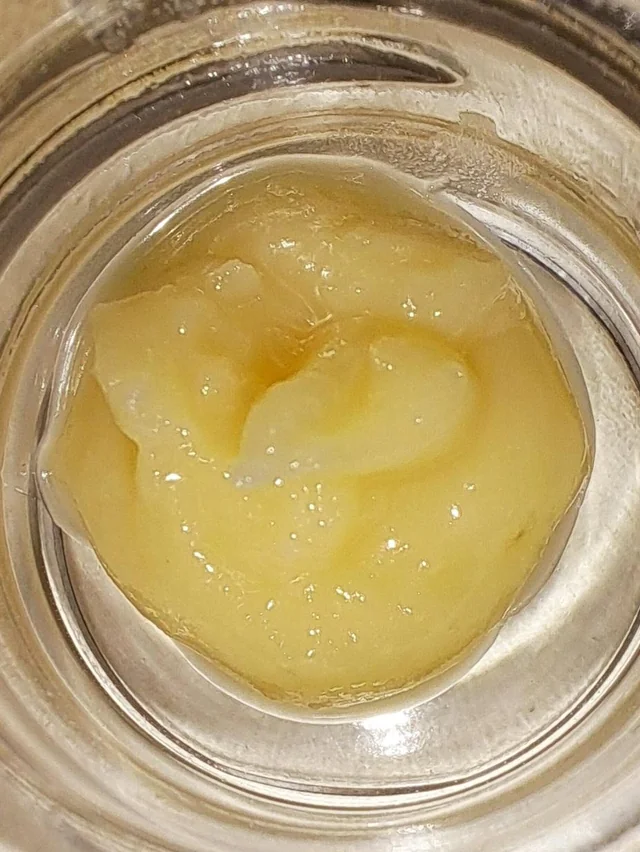

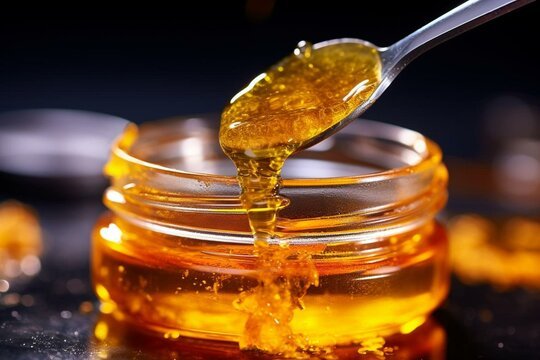

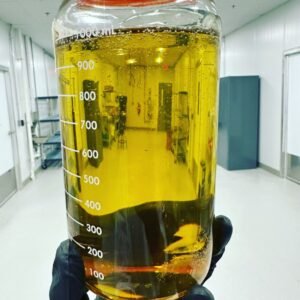
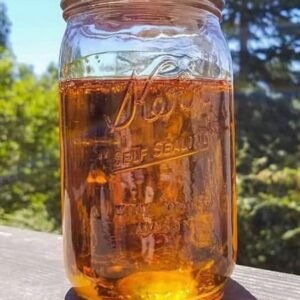
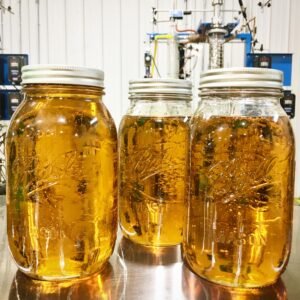
Ernest –
I love the taste; it’s so much fresher and more flavorful than anything else I’ve tried. Worth every penny
Lady Vee –
The effects are strong yet balanced, with a calm, happy vibe that lasts.